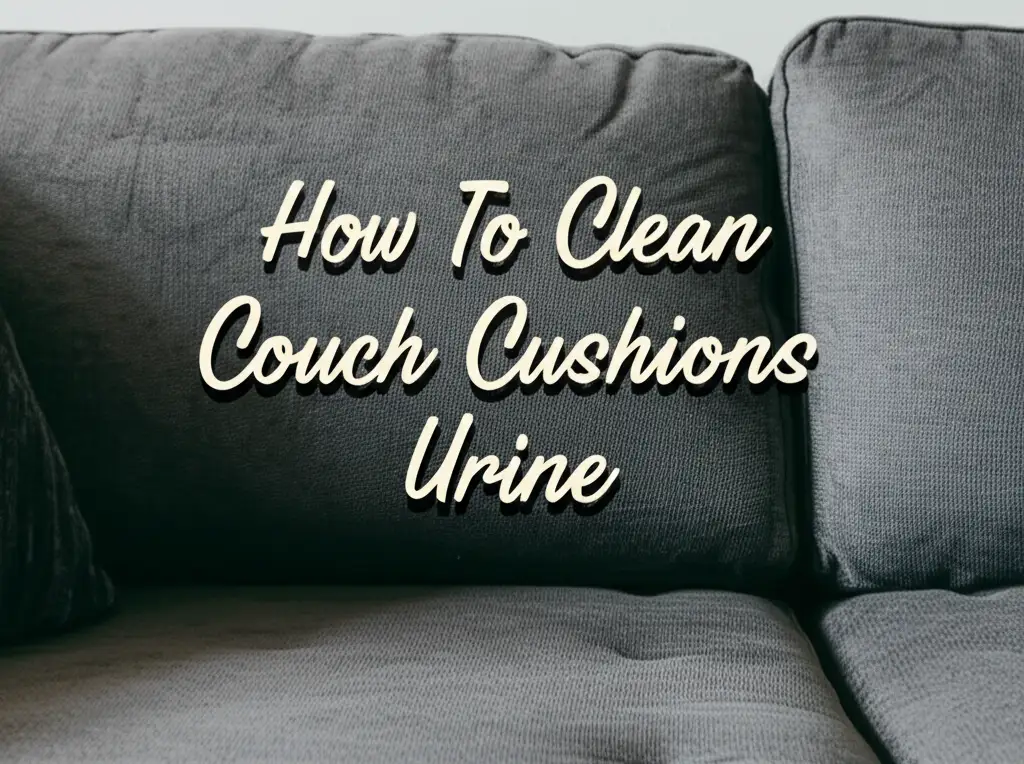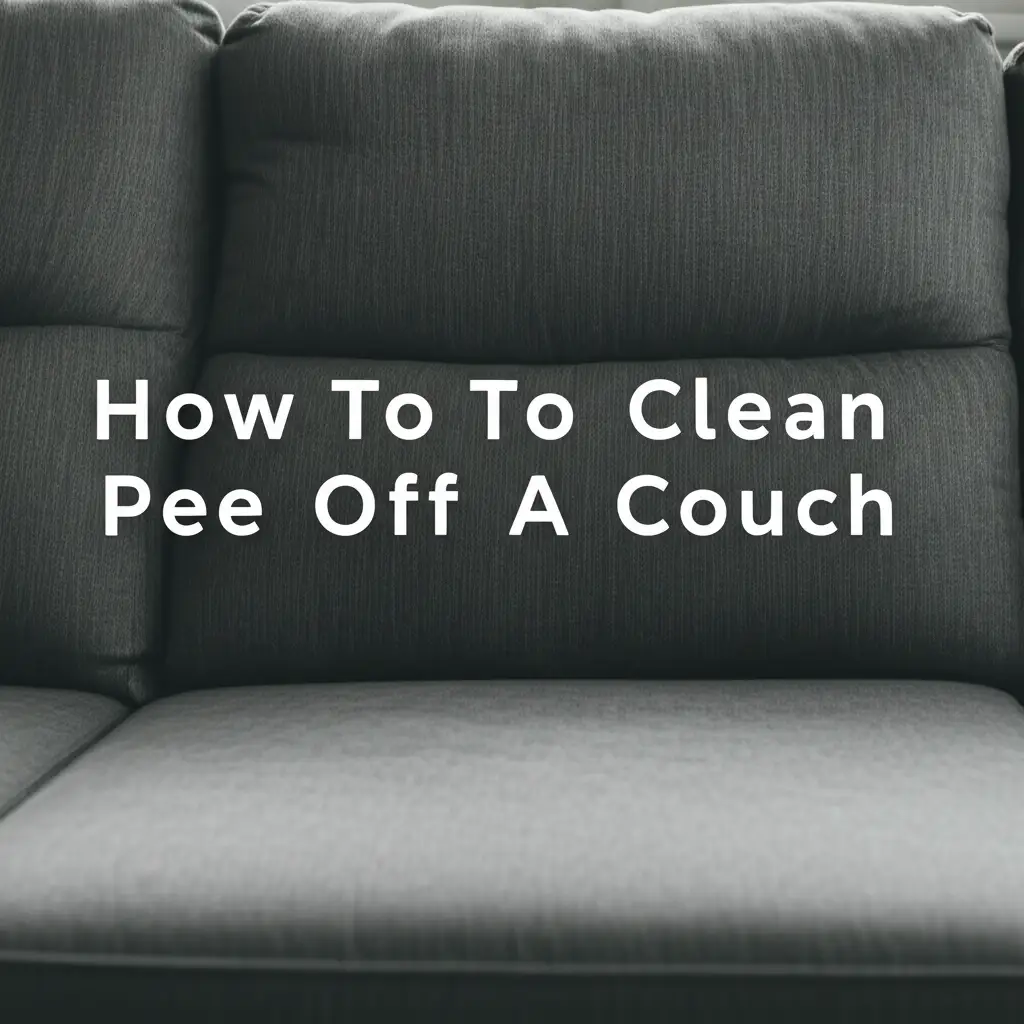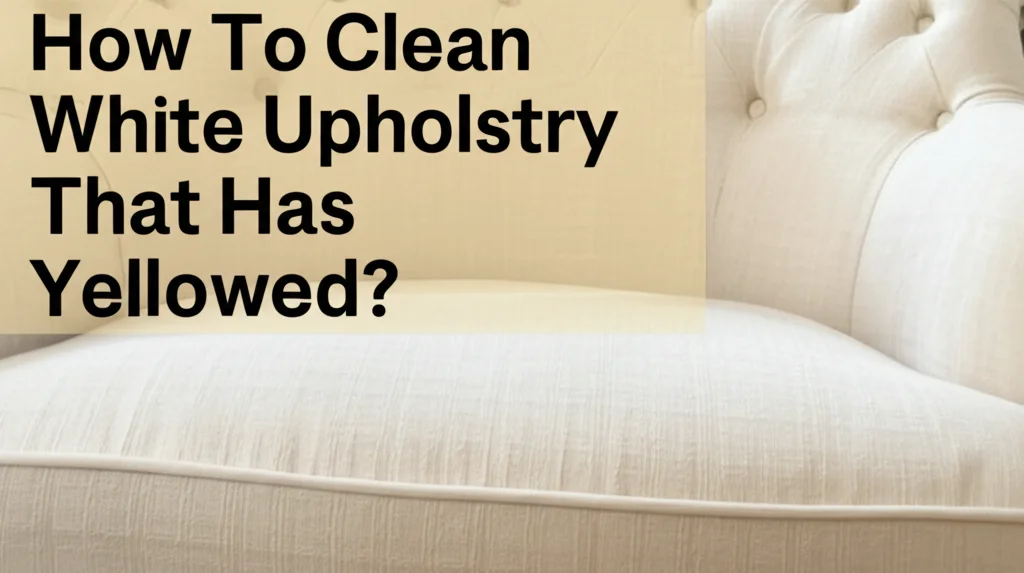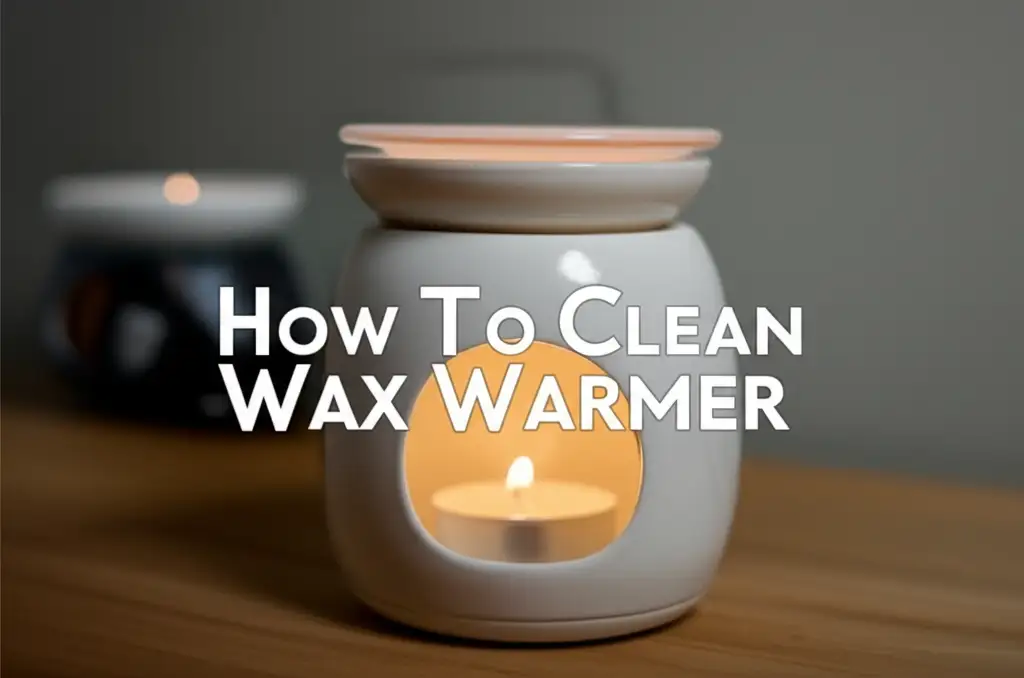· Home Cleaning · 19 min read
How To Clean Couch Cushions Urine

Clean Couch Cushions: Remove Urine Stains Effectively
A beautiful couch brings comfort to your home. But accidents happen, and urine stains on couch cushions can feel like a major problem. Whether it is a pet mishap or a child’s accident, that distinct odor and stain need quick action. Ignoring it means a permanent smell and discoloration. I understand the frustration. My own dog once had an accident on my favorite armchair, and I learned quickly how to manage it.
This guide helps you remove urine from your couch cushions. We cover immediate steps, essential supplies, and effective cleaning methods. You will learn how to tackle both fresh spills and older, set-in stains. We also discuss preventing future accidents. This article gives you the knowledge to restore your couch. It helps you keep your living space fresh and clean.
Takeaway
- Act fast: Blot fresh urine immediately to prevent deep penetration.
- Check fabric codes: Use the correct cleaning method for your couch material.
- Use enzymatic cleaners: These break down urine molecules, eliminating odor.
- Dry thoroughly: Ensure cushions dry completely to prevent mold and mildew.
- Prevent future stains: Implement strategies to protect your couch.
Main Query Answer
To clean couch cushions urine, first blot fresh liquid quickly. Then, apply a mixture of white vinegar and water, followed by baking soda to absorb odor. For deep-set stains and smells, an enzymatic cleaner is essential. Always test solutions on an unseen area first.
Immediate Steps: Tackling Fresh Urine on Couch Cushions
A fresh urine stain on couch cushions needs immediate attention. Fast action prevents the urine from soaking deep into the cushion foam. This step also stops the odor from spreading and setting. Time is important here. The longer urine sits, the harder it is to remove completely. You can prevent a big problem by acting quickly.
Blotting the Area
Start by blotting the wet area. Do not rub the stain. Rubbing pushes the urine deeper into the fabric and foam. Use a thick stack of clean paper towels or an old towel. Press firmly on the wet spot. You want to absorb as much liquid as possible. Keep blotting until no more moisture transfers to the paper towels. Change towels often to avoid spreading the urine. This process pulls the urine out of the fabric. It makes the next cleaning steps more effective. My experience tells me that patience with blotting saves much effort later.
Preparing the Cleaning Area
Clear the area around the affected cushion. Remove any decorative pillows or throws. If your cushions have removable covers, take them off. You may need to clean both the cover and the foam insert. Place old towels or a plastic sheet under the cushion. This protects your floor or the couch frame from any cleaning solutions. Ensure you have good ventilation in the room. Open windows or turn on a fan. This helps with fumes and aids in drying later.
Essential Supplies for Urine Removal
Gather all your cleaning supplies before you start. Having everything ready saves time and ensures a smooth process. You will need a few common household items. These items help break down urine and neutralize odors. Proper tools make the job easier and more effective.
Here is a list of what you will need:
- Paper towels or clean white cloths: For blotting and applying solutions.
- White vinegar: A natural deodorizer and disinfectant.
- Baking soda: Absorbs odors and moisture. Learn how baking soda helps clean your couch effectively.
- Dish soap (mild): For light surface cleaning.
- Enzymatic cleaner: Essential for breaking down uric acid crystals and eliminating odors.
- Spray bottle: For applying liquid solutions evenly.
- Vacuum cleaner (with upholstery attachment): For removing dried residue.
- Gloves: To protect your hands.
- Bucket of clean water: For rinsing.
Having these items ready helps you tackle the urine stain effectively. A strong enzymatic cleaner is key for urine, especially pet urine. You can find these at pet stores.
Identifying Your Couch Fabric: A Crucial First Step for Urine Cleaning
Before you apply any cleaning solution, you must know your couch fabric type. Different fabrics react differently to liquids and chemicals. Using the wrong product can damage your couch. It can cause discoloration, shrinking, or water rings. Checking the care tag is very important. This tag provides specific cleaning instructions from the manufacturer. It helps you choose the safest and most effective method for your couch cushions.
Understanding Fabric Care Codes
Look for a small tag, usually under a cushion or on the couch frame. This tag often has a letter code. These codes tell you how to clean the fabric:
- W (Water): You can use water-based cleaners on this fabric. Most synthetic fabrics like polyester fall into this category. This is the easiest type for urine cleaning.
- S (Solvent): This fabric requires water-free solvents or dry-cleaning solutions. Using water can cause stains or damage. Examples include rayon, silk, or some cotton blends.
- WS (Water/Solvent): You can use either water-based cleaners or solvents. This offers more flexibility.
- X (Vacuum Only): This fabric cannot be cleaned with any liquid. Only vacuuming is recommended. Professional cleaning is often needed for stains. This type is rare for couch cushions but exists.
Knowing your code protects your furniture. It prevents irreversible damage. If your couch has an “S” or “X” code, proceed with extreme caution. Consider professional help for urine stains. Using water on an “S” code fabric can create water rings that are very difficult to remove.
Testing Cleaning Solutions
Always test any cleaning solution on an inconspicuous area of your couch first. This could be the back of a cushion or a hidden spot. Apply a small amount of the solution with a clean white cloth. Let it sit for 5-10 minutes. Then, blot it dry. Check for any discoloration, shrinking, or other negative reactions. If the fabric looks fine, you can proceed with confidence. This simple test prevents potential damage to a visible part of your couch. It ensures the cleaning process is safe for your specific material. Do not skip this step. It is a vital safeguard against permanent damage.
Different fabrics react differently. For example, velvet might show water marks easily. Linen can shrink. Testing helps you avoid these issues. If you have an “S” coded fabric, you might need a specialized cleaner. These cleaners do not contain water. They are designed for delicate materials. Always follow product instructions carefully.
Homemade Solutions: Effective Recipes for Couch Urine Removal
After blotting the fresh urine, homemade solutions can tackle the stain and initial odor. These solutions use common household items. They are often effective for fresh spills. They also act as a pre-treatment before using stronger enzymatic cleaners. These methods are a good first line of defense. They help lift the stain and neutralize some of the smell.
White Vinegar and Water Mixture
White vinegar is a powerful natural deodorizer and mild disinfectant. Its acidity helps neutralize the alkaline components in urine. This combination is effective for fresh and moderately set stains. I find this mixture quite useful for my own cleaning tasks.
To prepare the solution:
- Mix equal parts white vinegar and cool water in a spray bottle. For example, one cup of vinegar with one cup of water.
- Lightly spray the affected area of the couch cushion. Do not saturate the cushion. You want to dampen the fabric.
- Let the solution sit for 10-15 minutes. This allows the vinegar to work on the urine components.
- Blot the area thoroughly with clean paper towels or a white cloth. Press down firmly to absorb the liquid.
- Repeat this process if the stain or odor persists.
This method helps break down the urine residue. It also reduces the strong ammonia smell. Ensure good ventilation while using vinegar. The smell of vinegar will dissipate as it dries. This solution is generally safe for most “W” coded fabrics.
Baking Soda for Odor Absorption
Baking soda is a renowned natural odor absorber. It works by neutralizing acidic and alkaline odors. After applying the vinegar solution, baking soda is the next step. It pulls out remaining moisture and odor from the cushion. This step is crucial for really getting rid of the lingering smell.
How to use baking soda:
- After blotting the vinegar solution, generously sprinkle baking soda over the damp, stained area.
- Cover the entire affected area. Make sure to sprinkle enough to form a visible layer.
- Let the baking soda sit for several hours, ideally overnight (8-10 hours). The longer it sits, the more odor it absorbs.
- Once dry, vacuum up the baking soda completely using your vacuum’s upholstery attachment.
- You can repeat this step if any faint odor remains.
Baking soda effectively pulls out moisture and odor. It is a safe and effective way to tackle lingering smells. You can discover more ways baking soda cleans your couch effectively. This combination of vinegar and baking soda is often enough for small, fresh accidents.
Enzymatic Cleaners: The Key to Eliminating Urine Odor Permanently
For urine stains, especially those from pets or older accidents, enzymatic cleaners are a must. Household cleaners may remove the visible stain, but they often leave behind uric acid crystals. These crystals contain odor-causing bacteria. When these crystals get wet again (even from humidity), the odor reactivates. This is why you sometimes smell urine even after cleaning. Enzymatic cleaners specifically target and break down these uric acid crystals. They eliminate the odor at its source, rather than just masking it. This ensures a truly clean and odor-free result.
How Enzymatic Cleaners Work
Enzymatic cleaners contain special enzymes. These enzymes are proteins that act as biological catalysts. They break down organic matter like urine, vomit, and feces. Specifically, they break down the uric acid salts and other organic compounds in urine. The enzymes literally “eat” the odor-causing molecules. This process eliminates the smell completely. This is different from disinfectants or general cleaners. Those products might kill bacteria but do not break down the uric acid crystals. For pet urine, enzymatic cleaners are crucial. They remove the scent markers that can attract pets back to the same spot.
To use an enzymatic cleaner effectively:
- Saturate the stain: Apply the enzymatic cleaner generously to the urine-affected area. Make sure it soaks down into the cushion as deeply as the urine did. If the urine soaked all the way through, you must saturate all the way through.
- Let it dwell: Follow the product instructions for dwell time. This is usually several hours, often 8-24 hours. The enzymes need time to work. Keep the area moist during this period. You can cover it with a damp cloth or plastic wrap to prevent drying.
- Blot and dry: After the dwell time, blot up any excess liquid. Then, allow the cushion to air dry completely. This step is critical. Do not rush the drying process. Good air circulation helps.
Choosing the Right Enzymatic Cleaner
Many enzymatic cleaners are available on the market. Look for products specifically designed for pet urine or organic stains. Read reviews and check ingredients. Some popular brands are available at pet stores or cleaning supply stores. My advice is to choose one with a good reputation. These cleaners work wonders for deep-set odors. Understanding how to clean subfloor from pet urine provides insight into deep odor removal principles that apply to cushions too. Always ensure the cleaner is safe for your specific couch fabric by testing it first. This ensures no damage occurs during the deep cleaning process.
Deep Cleaning Techniques for Stubborn Urine Stains and Odors
Sometimes, urine stains and odors are stubborn. This happens with old accidents or if the urine soaked deep into the cushion. In such cases, more intensive deep cleaning methods are necessary. These techniques help remove residue that surface treatments might miss. They ensure your couch cushions are truly clean and odor-free.
Using a Wet Vacuum or Carpet Cleaner
A wet vacuum, also known as a carpet cleaner or upholstery cleaner, can be very effective. These machines spray a cleaning solution onto the fabric and then suction it back up. This process extracts liquid and dissolved contaminants from deep within the cushion. Many models come with upholstery attachments perfect for couches.
How to use a wet vacuum:
- Pre-treat: Apply an enzymatic cleaner as described in the previous section. Let it dwell according to product instructions.
- Fill the machine: Fill the wet vacuum’s clean water tank with warm water. You can add a small amount of the recommended upholstery cleaning solution if the machine requires it. Do not use household detergents not designed for these machines.
- Extract: Slowly pass the upholstery attachment over the stained area. Spray the cleaning solution, then immediately suction it back up. Make overlapping passes.
- Rinse: Use plain warm water in the machine’s tank to rinse the area. Extract the water until it comes up clear. This removes any cleaner residue.
- Dry: Allow the cushions to air dry completely. Use fans or open windows to speed up drying.
This method pulls out significant amounts of liquid and grime. It is a powerful tool for deep cleaning. For smaller units, like a Bissell Little Green, learning how to clean a couch with Bissell Little Green can be highly beneficial.
Steam Cleaning Considerations
Steam cleaning uses hot vapor to sanitize and clean fabric. It can break down stubborn dirt and kill bacteria. However, using a steamer for urine stains requires caution. The high heat can “bake in” protein stains like urine if not done correctly. It can also spread the odor if the uric acid crystals are not neutralized first.
My advice:
- Pre-treat with enzymatic cleaner: Always use an enzymatic cleaner first. Allow it to work fully and dry the cushion as much as possible. This neutralizes the odor-causing components.
- Use a garment steamer: A garment steamer, not a high-pressure carpet steamer, is safer for upholstery.
- Light passes: Make light passes over the area. Do not over-saturate.
- Ventilation: Ensure excellent ventilation during and after steaming.
Steam is generally better for sanitizing after a stain has been removed. It is less ideal for initial urine stain removal. If you opt for steam, proceed with extreme caution and test first. Read more on how to clean a couch with a steamer for general cleaning purposes.
When to Call a Professional Cleaner
Sometimes, despite your best efforts, a urine stain might persist. Or, the odor simply will not go away. This often happens with very old, large, or deeply saturated stains. Certain delicate fabrics, like silk or velvet, also pose a challenge. These materials are prone to water damage or discoloration. If you have tried multiple methods without success, or if you are unsure about your fabric type, call a professional. Professional upholstery cleaners have specialized equipment and chemicals. They can often remove stains and odors that DIY methods cannot. They also know how to treat delicate fabrics safely. A professional cleaning can save your couch and ensure a truly fresh living space.
Drying and Preventing Mold After Cleaning Urine from Cushions
Proper drying is as important as the cleaning itself. If couch cushions do not dry completely, moisture gets trapped inside. This trapped moisture creates an ideal environment for mold and mildew growth. Mold causes a musty smell and can damage your couch fabric. It also presents health risks. After cleaning urine, ensure thorough drying to prevent these issues.
Speeding Up the Drying Process
Several steps help your cushions dry faster:
- Blot extensively: After cleaning, use clean, dry towels to blot the cushions again. Press down firmly to absorb as much moisture as possible. The more liquid you remove manually, the faster it dries.
- Increase air circulation:
- Open windows: Allow fresh air to circulate through the room. This helps carry away moisture.
- Use fans: Place standing fans or box fans near the cushions. Direct the airflow directly onto the treated area. This significantly speeds up drying.
- Dehumidifier: If you live in a humid environment, a dehumidifier can be very helpful. It pulls moisture out of the air, aiding the drying process.
- Elevate cushions (if removable): If your couch cushions are removable, stand them on their side. You can prop them against a wall or furniture. This allows air to circulate around all sides of the cushion. Do not place them flat on the floor, as this traps moisture underneath.
- Sunlight (with caution): Direct sunlight can help dry cushions quickly and naturally. It also acts as a natural deodorizer. However, be careful. Prolonged exposure to direct sunlight can fade fabric colors. Only use this method for a short period, or if your cushions are colorfast. Test an area first.
Drying can take 24-48 hours, or even longer for thick cushions. Do not replace cushion covers or put the cushions back on the couch until they are completely dry to the touch. Any dampness can lead to mold.
Preventing Mold and Mildew Growth
Even after drying, take steps to ensure mold does not grow.
- Check regularly: For a few days after cleaning, occasionally check the cushions for any lingering dampness or musty smells.
- Maintain low humidity: Keep your living space’s humidity levels in check, especially if you live in a humid climate. Use a dehumidifier if needed.
- Air flow: Ensure furniture is not pushed directly against walls. This allows air to circulate around and behind the couch.
- Use moisture absorbers: For ongoing prevention, especially in damp rooms, place moisture absorber packets or small containers of activated charcoal near or under the couch.
By prioritizing thorough drying and proper ventilation, you protect your couch cushions from mold and mildew. This keeps your home smelling fresh and your furniture in good condition.
Future Prevention: Keeping Couch Cushions Urine-Free
Cleaning urine from couch cushions is a big job. Preventing future accidents saves you time and effort. It also protects your furniture. Proactive steps are always better than reactive cleaning. Implementing preventive measures helps maintain a clean and fresh living space. This is especially true for homes with pets or young children.
Training and Routines for Pets
For pets, accidents on furniture often indicate a need for better training or a change in routine.
- Consistent potty breaks: Take your dog outside frequently. Maintain a consistent schedule, especially after waking up, eating, and playing. This reduces the chances of indoor accidents.
- Crate training: Crate training can help dogs learn bladder control. Dogs naturally do not soil their sleeping areas. A properly sized crate is a safe space for them.
- Supervision: Watch your pet closely when they are inside. If they start sniffing around or circling, immediately take them outside.
- Positive reinforcement: Reward your pet heavily when they eliminate outside. Praise and treats help them associate outdoor potty breaks with positive experiences.
- Address underlying issues: If your previously housetrained pet starts having accidents, a vet visit is important. It could signal a medical issue like a urinary tract infection. Behavioral problems also cause accidents.
By addressing these training and routine aspects, you can significantly reduce pet urine incidents on your couch cushions.
Using Protective Covers and Waterproof Barriers
Physical barriers offer the best protection for your couch.
- Washable couch covers: Invest in washable couch covers. These covers act as a first line of defense. If an accident happens, you can simply remove the cover and wash it. Choose covers that fit well and are easy to take off and put back on. Many stylish options exist.
- Waterproof mattress protectors (for cushions): For deep protection, consider using waterproof mattress protectors or custom-made waterproof liners. You can place these under your cushion covers. They create an impermeable barrier. Urine cannot soak through to the foam. This protects the core of your cushion.
- Pet throws or blankets: If your pet has a favorite spot on the couch, place a dedicated pet throw or blanket there. This adds an extra layer of protection. These are easy to wash if an accident occurs.
- Water-resistant sprays: You can apply water-resistant upholstery protector sprays. These sprays create a barrier that repels liquids. They give you more time to blot up spills before they soak in. Always test these sprays on a hidden area first.
By combining training with physical barriers, you create a robust defense against urine stains. This keeps your couch looking and smelling clean for years. It reduces stress and provides peace of mind. Prevention is always simpler than extensive cleaning.
FAQ Section
Can old urine stains be removed from couch cushions?
Yes, old urine stains can often be removed, but they are more challenging. The key is to use an enzymatic cleaner. These cleaners break down the uric acid crystals responsible for the lingering odor and stain. You may need multiple applications and extended dwell times for older stains. Patience and thorough drying are vital for success.
What removes urine smell from couch cushions?
An enzymatic cleaner is the most effective solution for removing urine smell. It breaks down the uric acid molecules that cause the odor. Baking soda also helps by absorbing residual smells after the initial treatment. Proper ventilation and thorough drying also remove any remaining odors.
Is white vinegar safe for all couch fabrics?
White vinegar is safe for most water-safe (“W” or “WS” coded) couch fabrics. It can cause discoloration or damage on delicate materials like silk, rayon, or fabrics with an “S” or “X” care code. Always test a small, hidden area of your couch before applying vinegar to the main stain.
How long does it take for urine smell to go away?
The urine smell goes away when the uric acid crystals are completely neutralized and the cushion is fully dry. With proper use of an enzymatic cleaner and thorough drying, the smell can be gone within 24-48 hours. If the cushion remains damp or the cleaner did not penetrate deep enough, the smell may persist longer.
When should I call a professional cleaner for urine stains?
You should call a professional cleaner if the urine stain is old, large, or has deeply saturated the cushion foam. Also, seek professional help if your couch fabric is delicate (e.g., silk, velvet, “S” or “X” coded) or if your DIY efforts have not removed the stain and odor effectively. Professionals have specialized tools and expertise.
Can I use a carpet cleaner on couch cushions?
Yes, many carpet cleaners come with upholstery attachments, making them suitable for couch cushions. Ensure the machine is designed for upholstery and use only recommended cleaning solutions. Always pre-treat the urine stain with an enzymatic cleaner first to break down the uric acid. Ensure thorough rinsing and drying afterward.
Conclusion
Dealing with urine on couch cushions can seem daunting, but it is a manageable task. You now understand the steps to effectively clean couch cushions urine. Quick action is always the best defense. Immediate blotting prevents the stain from setting deep. Understanding your couch fabric type guides your cleaning choices. Homemade solutions like vinegar and baking soda offer a great first step. Enzymatic cleaners are truly essential for breaking down the stubborn odor-causing molecules. Deep cleaning tools like wet vacuums help extract stubborn residue. Remember, thorough drying is critical to prevent mold. Finally, prevention through pet training and protective covers saves future headaches.
Your couch can return to its fresh, clean state with these methods. Do not let accidents bring down your living space. You have the knowledge to tackle these challenges confidently. Keep your home comfortable and clean for everyone. Take action, and enjoy your fresh couch cushions again.
- couch cleaning
- urine stain removal
- pet urine
- upholstery cleaning
- remove urine smell
- cleaning tips
- cushion care




